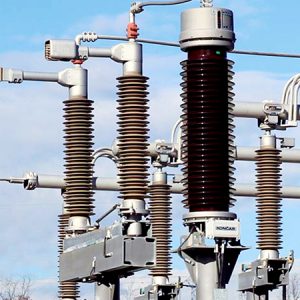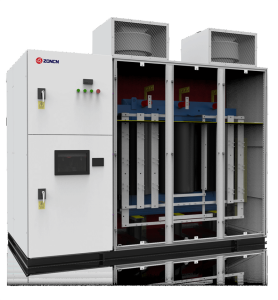
A transformer is a device that converts the voltage of an input current into another voltage output. Converting to a voltage lower than the input voltage is called step-down, and vice versa, converting to a voltage higher than the input voltage is called step-up. There are three power supply voltage standards: low voltage, high voltage, and ultra-high voltage.
A high-voltage transformer is a power transformer whose main function is to convert high voltage to low voltage, or convert low voltage to high voltage, for the transmission and distribution of electricity. The electricity generated by a power plant is tens of thousands of volts of high voltage electricity, which cannot be used if it is directly transmitted to users. Power plants can only transmit electricity at high voltage and low current, and then reduce the voltage to a usable voltage through a high-voltage transformer, which increases the voltage level of power generation.
High-voltage transformers are used in power conversion systems to convert the voltage level of AC power to different voltage levels, which is useful for applications such as electric vehicles and renewable energy systems.
Advantages of high-voltage transformers
High-voltage transformers reduce energy losses during power transmission by increasing voltage and reducing current. High-voltage transformers can also adjust voltage according to different needs to meet the power needs of various electrical appliances in our daily lives.
High-voltage transformers are adjusted according to different voltage level requirements to meet the power needs of different regions and users, optimize the allocation of power resources, and reduce unnecessary resource waste.
Generally speaking, the voltage output by a high-voltage transformer is stable, which makes it safer when we use the rated voltage, reduces voltage shocks and damage to electronic products, and extends the life of related equipment.
Disadvantages of high-voltage transformers
High-voltage transformers are expensive to design, manufacture, and install, especially large and ultra-high voltage transformers, and the initial investment is very expensive. Specialized infrastructure such as substations, cooling systems, and protective devices are required, which also increase the overall cost.
Failure of high-voltage transformers may cause large-scale power outages, affecting the stability and reliability of the power system. Once damaged, the repair process is complicated and expensive, and sometimes it takes a long time to restore normal operation.
As a professional power equipment, high-voltage transformers require professionals to repair and maintain them, which is a complicated and time-consuming process.
Where can I see high-voltage transformers?
Power generation
In power plants, the voltage generated by generators is usually low (several thousand volts). High-voltage transformers increase it to a high voltage suitable for long-distance transmission (tens of kilovolts to hundreds of kilovolts) for efficient long-distance transmission.
Power transportation
The high-voltage transformer in the substation reduces the high voltage electricity to meet the transmission needs of different voltage levels. Near the power user, the high voltage electricity is further reduced by the transformer to provide a voltage suitable for home, commercial or industrial use.
Power supply allocation
High-voltage equipment in industrial enterprises (such as large motors, electric furnaces, etc.) requires high-voltage power supply, and high-voltage transformers can provide high voltage suitable for these equipment.
In rail transit systems, high-voltage transformers are used to convert grid voltage into voltage suitable for rail transit systems to provide power for electric locomotives and subways.
In wind farms and photovoltaic power stations, high-voltage transformers are used to increase the voltage generated by wind turbines and solar panels for easy integration into the grid.
High-voltage transformers play a key role in all aspects of the power system, from power generation, transmission to distribution and various industrial and civil scenarios, ensuring efficient transmission, distribution and use of electricity. Through reasonable voltage conversion and regulation, high-voltage transformers greatly improve the reliability, stability and efficiency of the power system.
High-voltage transformer price
The capacity of the transformer is one of the main factors that determine its price. High-voltage transformers with large capacity (such as hundreds of megavolt-amperes) are usually expensive because they require more materials and complex manufacturing processes. If custom designs or special requirements (such as durability in special environments, protective measures, etc.) are required, the manufacturing cost and the final price will increase.
Specific price range examples
Small transformers (hundreds of kilovolt-amperes): a few thousand dollars to tens of thousands of dollars.
Medium transformers (several thousand to tens of kilovolt-amperes): tens of thousands of dollars to hundreds of thousands of dollars.
Large transformers (tens of kilovolt-amperes and above): hundreds of thousands of dollars to millions of dollars.
When purchasing a high-voltage transformer, detailed commercial negotiations and quotations are usually required with the inverter manufacturer or supplier to obtain accurate quotations and technical support.

